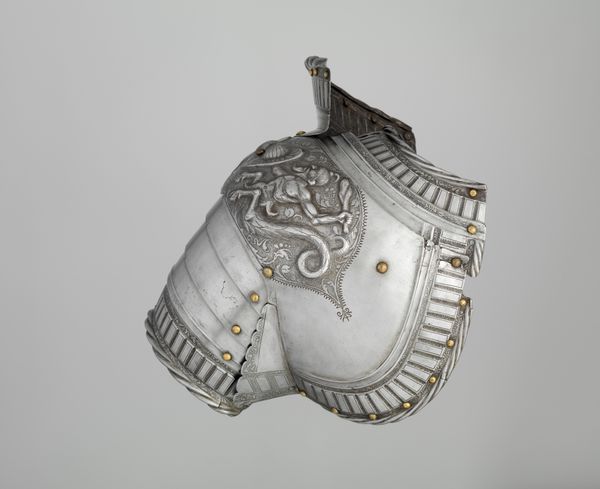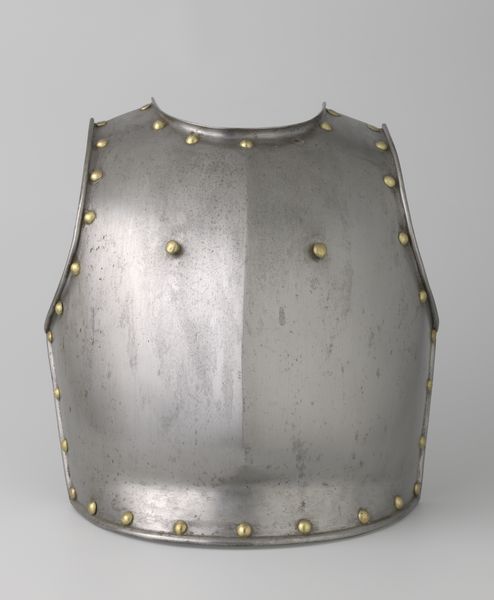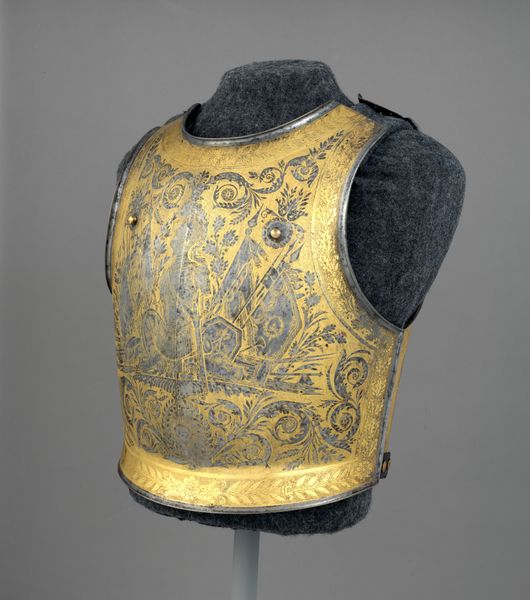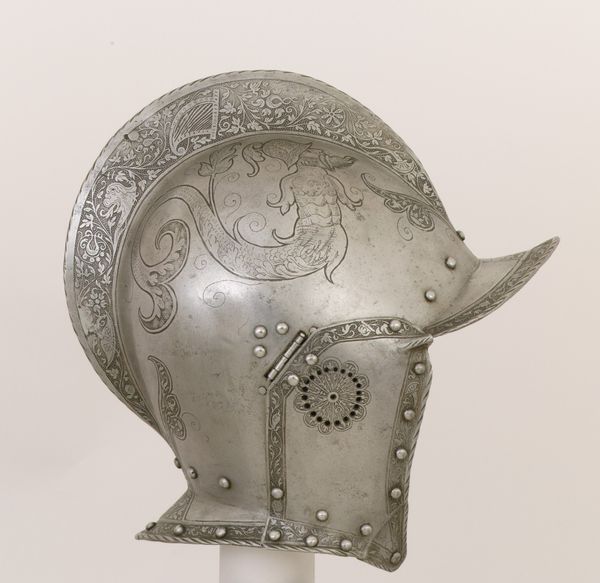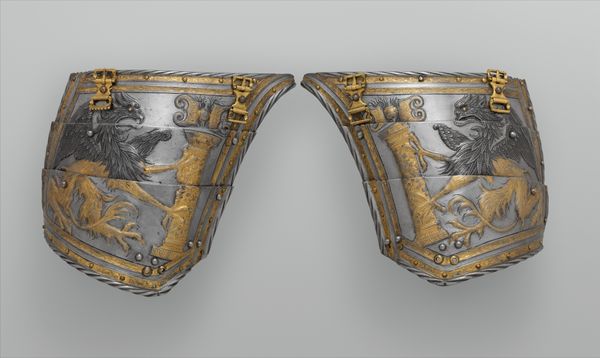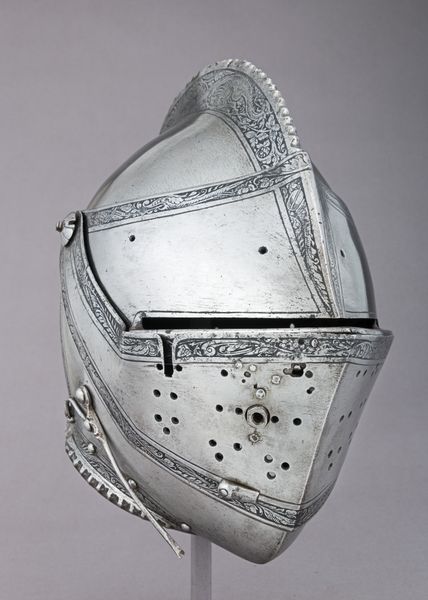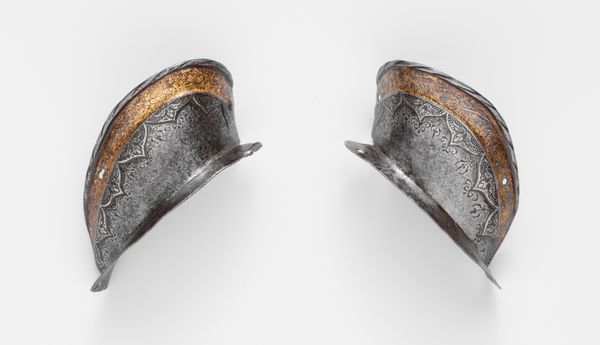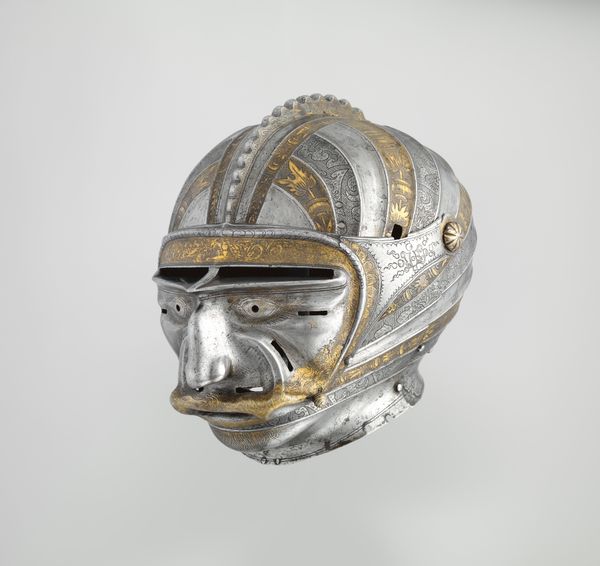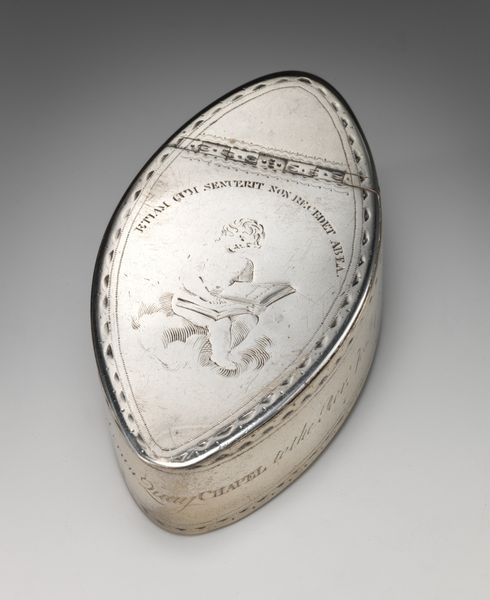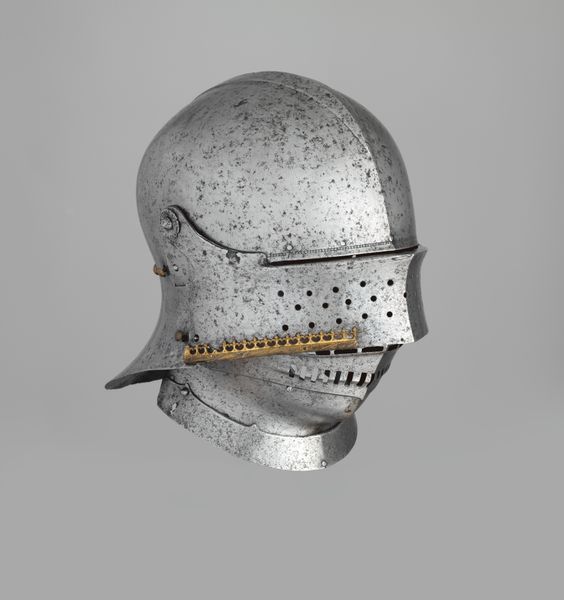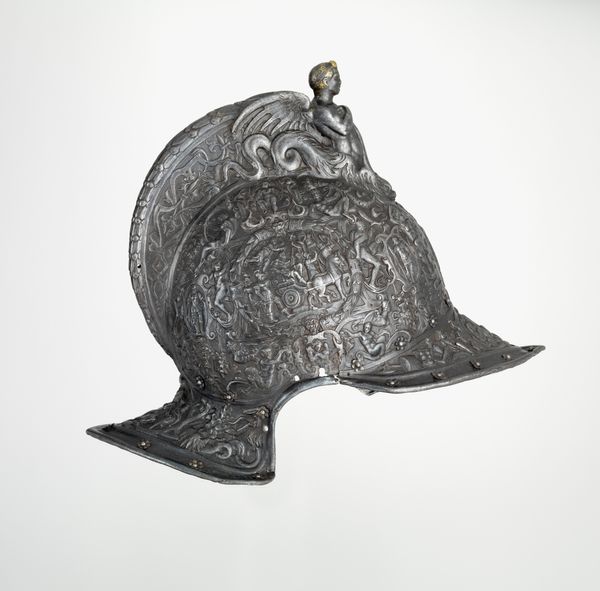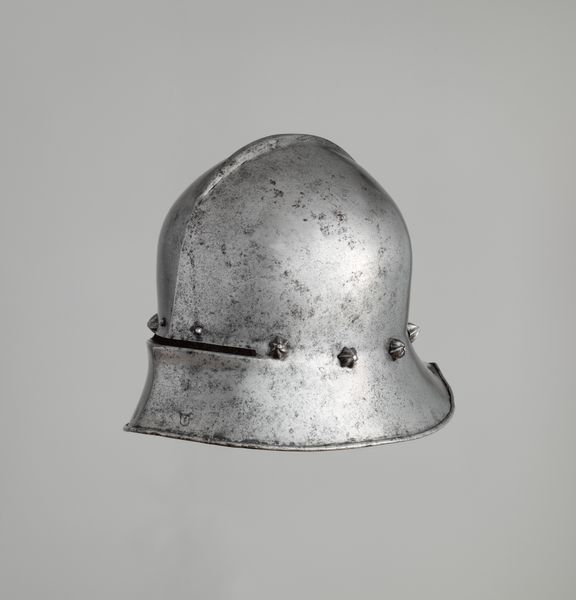
metal, sculpture
#
medieval
#
germany
#
metal
#
sculpture
#
history-painting
#
armor
#
decorative-art
#
arm
Dimensions: Shoulder defense (a); H. 8 1/2 in. (21.6 cm); W. 9 in. (22.9 cm); D. 8 3/4 in. (22.2 cm); Wt. 34.1 oz. (966.7 g); shoulder defense (a) and arm defense (b); H. approx. 28 in. (71.1 cm); W. approx. 10 in. (25.4 cm); Wt. 5 lb. 9 oz. (2523.1 g)
Copyright: Public Domain
This is a right shoulder and arm defense made in Germany around the mid-16th century by Wolfgang Grosschedel. More than a functional object, this piece is a potent symbol of power and status. The intricate floral designs etched into the steel, combined with the gilded rivets, elevate this armor from mere protection to a work of art. In the 16th century, armor was a crucial component of warfare, but also a reflection of social hierarchy. Elaborately decorated armor, like this piece, was typically commissioned by the elite, demonstrating wealth and martial prowess. Consider the social and political landscape of the Holy Roman Empire at this time: the rise of powerful noble families, the constant threat of war, and the flourishing of artistic patronage. This armor embodies these tensions, being both a tool of war and an ostentatious display of wealth. To fully understand the piece, we can look at similar examples in museum collections, consult historical records of armor production, and analyze the socio-political context in which Grosschedel operated. This helps us appreciate how it reflects the values and structures of its time.
Comments
No comments
Be the first to comment and join the conversation on the ultimate creative platform.
